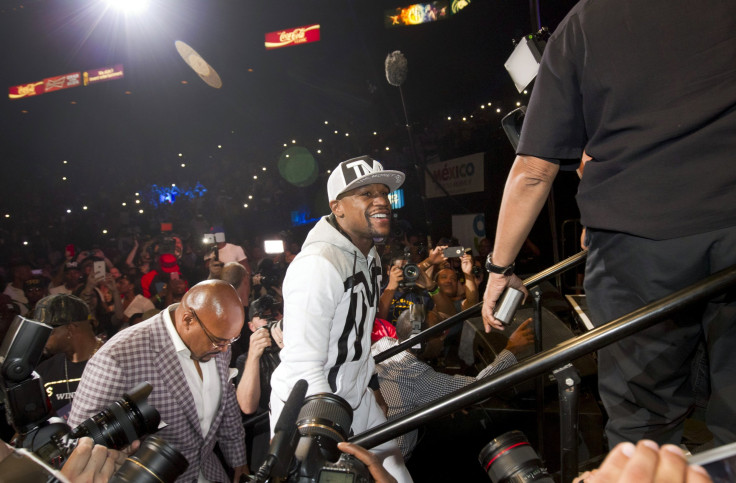What Is Cryotherapy? For Manny Pacquiao Fight, Floyd Mayweather Using Frigid Treatment Thought To Speed Recovery After Workouts

With a record-breaking $300 million-plus prize at stake, Saturday night's "Fight of the Century" has fighters Floyd Mayweather Jr. and Manny Pacquiao taking every opportunity to gain an edge over one another. Mayweather has even taken to dipping his body into a tank of nitrogen gas to freeze for three minutes at minus-240 degrees Fahrenheit.
The treatment -- known as whole-body cryotherapy -- is meant to reduce muscle soreness and improve recovery time for athletes after a particularly rough workout. But Mayweather -- never one to embrace moderation -- has taken advantage of the services at Subzero Recovery in Las Vegas on a near daily basis throughout his training leading up to Saturday’s match against Pacquiao at the MGM Grand.
“That’s kind of what we’re hoping to do for Floyd because he works out so hard each day," Dave Levi, CEO of Subzero, says in a video posted by the fighter’s YouTube Channel. "He’ll be able to recover and work out harder the next day and hopefully he’ll get the best results so that May 2, he can be at his peak performance."
A typical cryotherapy session only lasts for a minute and a half to three minutes. Subzero Recovery says that this brief exposure to extreme cold pushes a human body into a “fight-or-flight response” that boosts endorphins and causes blood to rush to the core, and then out through the body once a client starts to warm up. A few studies suggest that cryotherapy can reduce inflammation or soreness after a workout, which may help athletes to recover more quickly, but relatively little research has been done on the method.
“It's a tool that in theory is supposed to reduce inflammation, which should help with recovery, which means that you should be able to get back to training more quickly,” Alain Aguilar, athletic trainer for the men’s soccer team at the University of North Carolina at Chapel Hill, says.
Aguilar says that cryotherapy is thought to work in a similar way to more common treatments such as soaking in an ice bath after a workout or applying ice to a sprained ankle.
“Ice is always good for inflammation and when you train, you develop a little bit of inflammation all over the body," he says. Levi says he thinks cryotherapy will replace ice baths because cryosaunas can reach far lower temperatures than 41 degrees Fahrenheit, which is typical for an ice bath, and sessions requires less of an athlete’s time.
Mayweather was the first customer to use the new cryosauna at Subzero Recovery, which opened earlier this month, the company said. The number of cryotherapy centers in the U.S. has risen from around six in 2012 to “at least 30” today, as Joanna Fryben, co-owners of KryoLife in New York City told New York Magazine. In Europe, the practice is far more popular, and a brief treatment typically runs between $64 to $90 per session.
“Some people really buy into it, some people don't. I'm somewhere in the middle,” Aguilar says. “I don't think it can hurt them but I don't know that it can help them.”
Professional athletes including Kobe Bryant and players on the Dallas Mavericks basketball team have also taken to the treatment, Shape reports. There are some risks if clients do not follow standard protocols – in 2011, former Olympic sprinter Justin Gatlin suffered frostbite on his feet right before the World Championships after walking into a cryosauna with socks that were wet from sweat.
© Copyright IBTimes 2024. All rights reserved.












